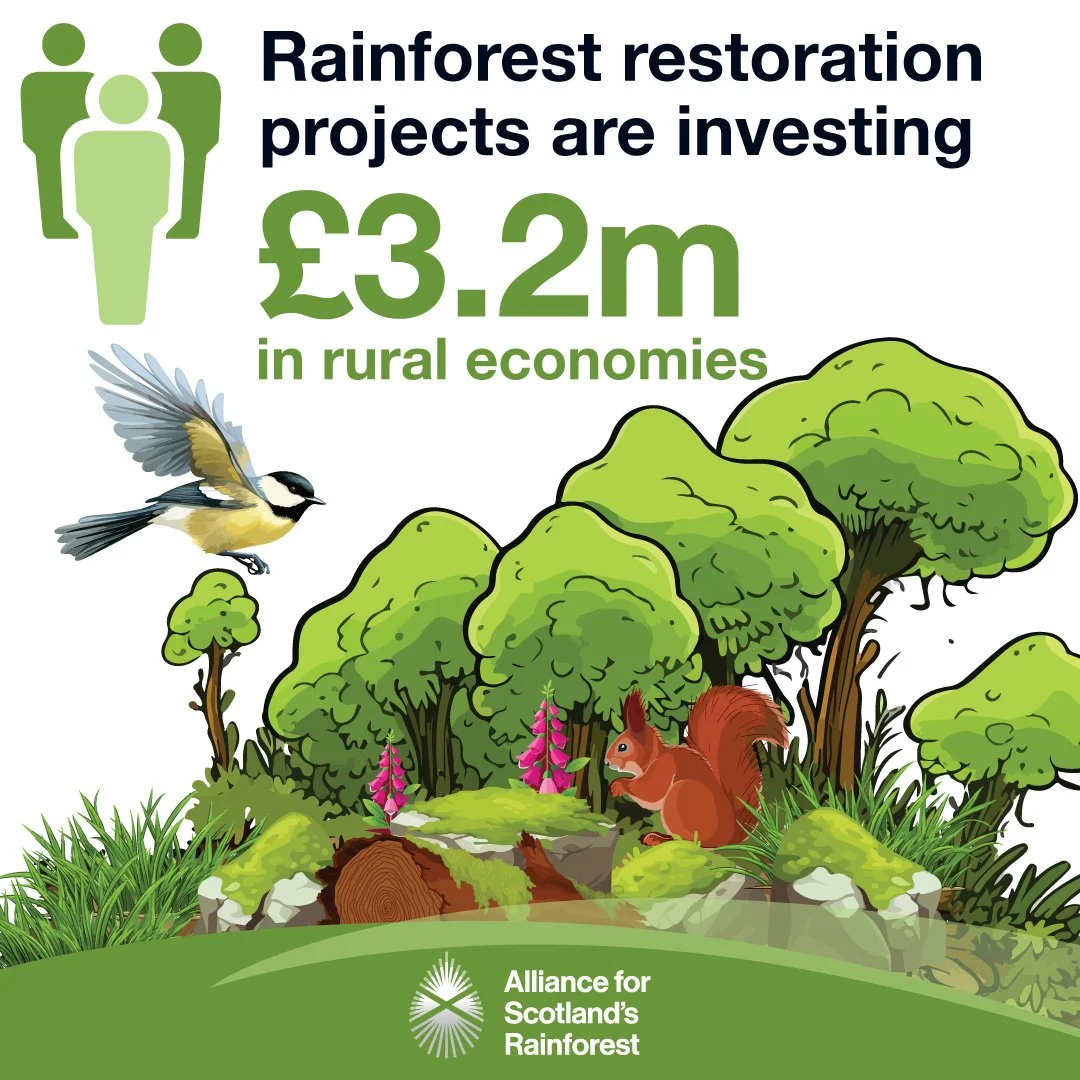Rainforest restoration projects bring jobs and investment to rural communities
A range of projects working to restore Scotland’s threatened temperate rainforest are set to bring economic benefits to some of the country’s most rural communities.
The equivalent of 40 new full-time roles will be employed through projects linked to the Alliance for Scotland’s Rainforest (ASR), a voluntary partnership of organisations committed to collaborative action for the benefit of Scotland’s rainforest.
The new roles will tackle landscape-scale restoration work in what’s known as the rainforest zone, a climatic area in the west of Scotland where temperate rainforest can form.
The projects, and most of the new jobs, have been made possible due to support from the Scottish Government’s Nature Restoration Fund (NRF), managed by NatureScot, and the National Lottery Heritage Fund (NLHF). They join a growing number of roles supporting rainforest work across Scotland funded by ASR partners, individual donors, companies and charitable trusts.
Paul Walton from RSPB Scotland, which is managing the Saving Morvern’s Rainforest project, said: “Scotland’s rainforests are incredibly rich woodlands that are bursting with life and support a diversity of rare and threatened species.
“There’s very little of this habitat left in Scotland, and it’s under huge threat from invasive plants, especially Rhododendron ponticum, and overgrazing by deer. We have a responsibility to protect and restore the remaining fragments, and this is going to take a continued commitment over many years.
“That also creates economic opportunities for fragile rural communities. Dozens more projects will be needed if rainforest restoration work is going to be effective and deliver on the Scottish Government’s commitment to restore and expand our rainforest. This generates many more potential jobs and contracts in the future, if support from the NRF and other key funding sources continues.”
The new jobs will be involved with the removal of invasive rhododendron in the rainforest, as well as grazing control, native tree planting, and working with local communities. Recruitment is already underway, with the jobs in high demand. One trainee position received a total of 198 applications.
In addition to the new jobs, investment in rainforest projects will pump an estimated £3.2m into local economies through indirect employment opportunities and contract spending.
Argyll and the Isles Coast and Countryside Trust is leading on two ASR rainforest projects at Knapdale and West Cowal. Their CEO, Julie Young, said: “Restoring our temperate rainforests is an amazing opportunity, but it’s also a huge challenge. If done half-heartedly or over a short timescale then all the initial work and investment will be wasted, and we’ll be right back where we started.
“To be successful, it’s crucial that this work receives long-term commitment from ASR partners and funders. The NRF has been really important in getting all the rainforest projects off the ground, but it’s due to end in 2026, so we need to think about where we go after that.
“It’s also vital that rainforest communities are at the heart of these projects, as this work can’t happen without the support of people who live in these areas.”
Scotland’s rainforests are woodlands of native trees like Oak, Ash and Hazel that grow within a zone in the west where there’s a high level of rainfall and consistent temperatures all year. They’re home to hundreds of species of mosses, liverworts and lichens, and support rare birds, such as the Pied Flycatcher, and butterflies, like the Chequered Skipper.
The seven existing ASR projects now cover more than 200,000ha, or around 10% of the rainforest zone, and there are more projects in development.
Find out more about these projects.
The RSPB has been working with an independent research company to estimate the socio- economic impact of rainforest restoration grants. The figures shown here are based on initial findings. The full report should be available early next year.
In total, NRF and NLHF funding has created 20 jobs and £2,119,448 of spend on contractors. From this the independent research company estimates £3.2m direct, indirect and induced GVA (gross value added) and 40 direct, indirect and induced jobs.



